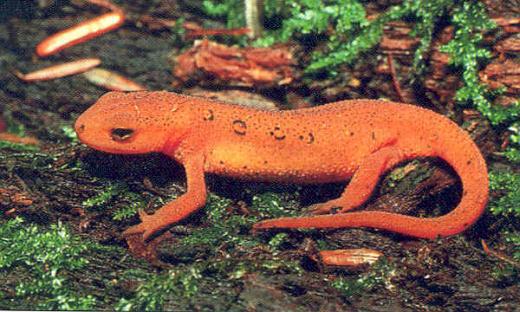What happens if you give newts amphetamine? Thanks to this study on regeneration of dopaminergic neurons in the newt brain, we now have the answer.

This study by Parish and colleagues of Karolinska Institute in Sweden sought to develop a new animal model of Parkinson’s disease, in which dopamine-producing cells of the midbrain die off, leaving patients with motor deficits. The researchers behind the study used red spotted newts, a salamander species that boasts an amazing ability to regenerate missing or injured body parts. Red spotted newts can grow back entire limbs, organs, and even brain cells – something that mammals, including humans, can only envy from afar.
In this study, the researchers looked for ways to ablate dopamine-producing brain cells, which then would mimic Parkinson’s disease symptoms, such as motor deficits, in salamanders. The newts in the study received midbrain injections of a neurotoxin called 6-OHDA, which kills off dopaminergic neurons. To confirm the effects of 6-OHDA, the scientists turned to amphetamine.
Amphetamine is a drug that stimulates the central nervous system by enhancing dopamine activity in the brain. This drug works by prolonging the time that dopamine molecules spend in the synaptic gap, therefore increasing the firing rate of dopaminergic neurons in the brain. Effects of amphetamine include hyperactivity and repetitive movements, similarly to its derivative methamphetamine, an illegal and highly addictive drug, also known as “crystal meth.”
The scientists behind the study predicted that if they had succeeded in killing off the dopaminergic neurons in the newt brain, then amphetamine would not have a noticeable effect on the animal behavior. The researchers treated their experimental animals with 6-OHDA, then performed sham, or drug-free, lesions in the control newts, and finally injected amphetamine into all the salamanders in the experiment.
Now we get to find out how salamanders react to potent psychostimulants.
Movie 1 in the supplemental figures of the paper shows two dishes. The top one is housing a newt with 6-OHDA-mediated loss of dopaminergic neurons. The animal is behaving like a regular salamander or, in other words, not doing much at all. By contrast, the animal in the bottom dish is restless; it is moving frantically around the round dish as if it were trying to find a hiding spot. This animal, which had been challenged with amphetamine, is exhibiting abnormal motor patterns that are characteristic of amphetamine intake.
It turns out that salamanders are not that dissimilar from humans, at least when it comes to effects of drugs. This study is one of the few to study salamander behavior in the context of clinical relevance to a human neurodegenerative disease. If newts’ extraordinary ability to regenerate parts of brain continues to be studied, perhaps one day people who live with such diseases can be helped.
Advertisements Share this:




